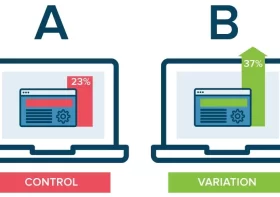Brand Perception Tracking
In today’s tech-savvy world, where new companies emerge with groundbreaking technologies every day, establishing a strong brand presence is paramount. However, building a successful brand goes beyond creating an eye-catching logo or a catchy slogan. It involves understanding and actively monitoring brand perception among consumers. Why? Because brand perception directly influences consumer behavior, brand loyalty, and ultimately, the success of a company.
What is Brand Perception Tracking?
Brand perception tracking is a strategic process that involves monitoring, analyzing, and managing the way consumers perceive and interact with a brand. By tracking brand perception, companies gain valuable insights into how their products or services are perceived in the market, enabling them to make data-driven decisions to enhance brand positioning, improve customer experiences, and drive long-term success.
Understanding the Benefits of Brand Perception Tracking
1. Real-time insights: Brand perception tracking allows companies to stay up-to-date with the ever-changing opinions and sentiments of their target audience. Through various qualitative and quantitative research methods, businesses can capture valuable data in real-time and adapt their marketing strategies accordingly.
2. Identifying opportunities and challenges: Tracking brand perception helps companies identify emerging trends, potential gaps in the market, or areas where their brand excels. By leveraging this information, businesses can seize new opportunities and address any potential challenges to stay ahead of their competitors.
3. Enhancing brand positioning: By understanding how consumers perceive a brand, companies can shape their brand positioning more effectively. This knowledge enables them to highlight unique selling points and develop marketing strategies that resonate with their target audience, ultimately strengthening their brand image.
4. Building brand loyalty: Consistently monitoring brand perception allows companies to identify any weaknesses or negative associations consumers may have with their brand. By addressing these issues promptly and proactively, businesses can build trust, loyalty, and long-term relationships with their customers.
5. Improving customer experiences: By tracking brand perception, companies can gauge how customers interact with their products or services. This insight enables them to identify pain points and make necessary improvements, resulting in enhanced customer experiences and increased satisfaction levels.
Effective Strategies for Implementing Brand Perception Tracking
1. Conducting regular customer surveys: Designing and distributing customer surveys is an excellent way to capture feedback and understand how customers perceive a brand. These surveys should focus on various aspects such as product quality, customer service, brand reputation, and overall satisfaction.
2. Utilizing social listening tools: Leveraging social listening tools allows companies to tap into conversations happening on social media platforms. By monitoring brand mentions, sentiment, and customer feedback in real-time, businesses can stay responsive and address any issues promptly.
3. Analyzing online reviews and ratings: Online platforms, such as review websites and online marketplaces, offer a wealth of consumer feedback. Companies should actively monitor and analyze this feedback to understand the strengths and weaknesses of their offerings and take necessary actions to improve customer perception.
4. Tracking brand sentiment: Using sentiment analysis tools, companies can track overall brand sentiment among consumers. This provides insights into how customers feel about the brand, allowing businesses to measure the impact of their marketing campaigns and make adjustments if needed.
The Future of Brand Perception Tracking in the Tech Industry
As technology continues to advance at an unprecedented pace, brand perception tracking will become even more critical in the tech industry. The ability to adapt to ever-changing market sentiments and consumer preferences will determine a company’s success in this competitive landscape.
Furthermore, with the rise of artificial intelligence and machine learning, companies can harness the power of data analytics to gain deeper insights into brand perception. These technologies enable businesses to process vast amounts of data and identify patterns and trends that would otherwise go unnoticed, allowing for more precise targeting and effective brand management.
Closing Thoughts
In the fast-paced and ever-evolving tech niche, brand perception tracking is vital for staying relevant and establishing a strong presence. By actively monitoring and managing brand perception, companies can identify opportunities, address challenges, and build long-lasting relationships with their customers. With the right strategy in place, businesses can position themselves as industry leaders and ensure their success in the tech arena.


